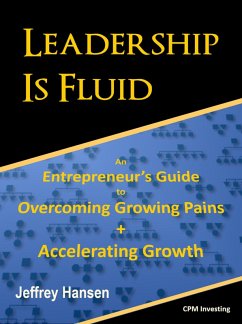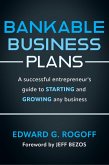An entrepreneur faces a range of management situations as the enterprise moves through five different phases of growth and development. Each phase is most effectively managed using a particular management approach that champions certain decision-making structures, cultural priorities, and organizational controls. Therefore, the entrepreneur must shift management approaches over time to remain effective and to take full advantage of their opportunities for growth.
Since most people have a preferred mix of management approaches, often called our management style, one can inadvertently over-apply one's preferred management style to situations that would respond better to other approaches. One can also inadvertently delay making needed shifts until the need for change is great and a crisis develops, which makes change more difficult and the future options more limited.
Founding entrepreneurs tend to have a management style that is creative and promotes organizational focus and agility, which accelerates progress in the first phase. With a successful innovation, the enterprise shifts to a phase in which growth is accelerated by focusing not on innovation but on improving efficiency and making work processes more transparent and rational. This shift in priorities is challenging and is the source of reduced growth and growing pains that must be overcome. If done quickly and effectively, the second phase is temporary and the enterprise moves on to other growth phases based on its scale and the maturity of its product. The leader and management team must keep pace with these changes in order to accelerate growth.
While it may not be easy to change one's management style, one can consciously change management priorities and practices to suit the current growth phase. Leadership is Fluid outlines the specific practices and priorities - the mode of operation - for each phase. These modes of operation reflect the priorities, practices, and controls of the ideal management style for each of the five growth phases.
Entrepreneurial leaders who have experienced various growth phases and modes of operation can navigate the growth path more quickly. They know the blind alleys to be avoided. Yet, wisdom about the growth path is often obtained from earlier failed experiences on the growth path.
A mental roadmap of the path ahead makes a difference. Without a mental roadmap, an entrepreneur might move through the five growth phases in a trial-and-error fashion and ultimately reach a desirable level of stability and strength in, say, six years. If one can reduce the trial-and-error aspect of navigating the path by knowing likely blind alleys that should be avoided and the appropriate mode of operation for a particular growth phase, one can navigate the path and get to the same status in, say, three years.
Leadership is Fluid provides a roadmap for entrepreneurial growth that includes the growth phase and the appropriate mode of operation, which takes the guesswork out of deciding how management practices and priorities should change over time.
It provides descriptions of thirteen classic growing pains that can indicate that deeper fundamental change is needed. One can use the appearance of the thirteen classic growing pains as early warning signals that a certain mode of operation should be reduced and another enhanced. Change can be initiated sooner and more alternative courses for the future can be considered.
Leadership is Fluid will help you develop growth acceleration strategies right for your enterprise. It will help you take fullest advantage of your enterprise's innovation.
Since most people have a preferred mix of management approaches, often called our management style, one can inadvertently over-apply one's preferred management style to situations that would respond better to other approaches. One can also inadvertently delay making needed shifts until the need for change is great and a crisis develops, which makes change more difficult and the future options more limited.
Founding entrepreneurs tend to have a management style that is creative and promotes organizational focus and agility, which accelerates progress in the first phase. With a successful innovation, the enterprise shifts to a phase in which growth is accelerated by focusing not on innovation but on improving efficiency and making work processes more transparent and rational. This shift in priorities is challenging and is the source of reduced growth and growing pains that must be overcome. If done quickly and effectively, the second phase is temporary and the enterprise moves on to other growth phases based on its scale and the maturity of its product. The leader and management team must keep pace with these changes in order to accelerate growth.
While it may not be easy to change one's management style, one can consciously change management priorities and practices to suit the current growth phase. Leadership is Fluid outlines the specific practices and priorities - the mode of operation - for each phase. These modes of operation reflect the priorities, practices, and controls of the ideal management style for each of the five growth phases.
Entrepreneurial leaders who have experienced various growth phases and modes of operation can navigate the growth path more quickly. They know the blind alleys to be avoided. Yet, wisdom about the growth path is often obtained from earlier failed experiences on the growth path.
A mental roadmap of the path ahead makes a difference. Without a mental roadmap, an entrepreneur might move through the five growth phases in a trial-and-error fashion and ultimately reach a desirable level of stability and strength in, say, six years. If one can reduce the trial-and-error aspect of navigating the path by knowing likely blind alleys that should be avoided and the appropriate mode of operation for a particular growth phase, one can navigate the path and get to the same status in, say, three years.
Leadership is Fluid provides a roadmap for entrepreneurial growth that includes the growth phase and the appropriate mode of operation, which takes the guesswork out of deciding how management practices and priorities should change over time.
It provides descriptions of thirteen classic growing pains that can indicate that deeper fundamental change is needed. One can use the appearance of the thirteen classic growing pains as early warning signals that a certain mode of operation should be reduced and another enhanced. Change can be initiated sooner and more alternative courses for the future can be considered.
Leadership is Fluid will help you develop growth acceleration strategies right for your enterprise. It will help you take fullest advantage of your enterprise's innovation.
Dieser Download kann aus rechtlichen Gründen nur mit Rechnungsadresse in A, B, CY, CZ, D, DK, EW, E, FIN, F, GR, H, IRL, I, LT, L, LR, M, NL, PL, P, R, S, SLO, SK ausgeliefert werden.









